We’re going on a beer hunt! Here are three fun-filled beer trips throughout the world. Each includes stops with recommendations for regional specialties, breweries to visit, and styles to seek out. Be sure to have a dedicated sober driver for your journey or plan your trip around public transport and taxis, where you can. And contact breweries ahead of time to schedule your visit!
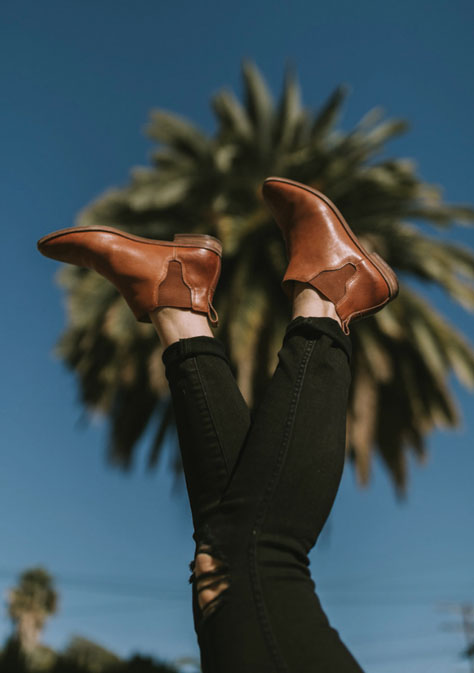
Get your boots on and head for a brewery
Photo: iStock: Rachel Gulotta Photography
TRIP 1
UNITED STATES
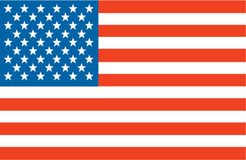
SAN FRANCISCO—BEND—PORTLAND—SEATTLE
TOTAL MILES: 818
TOTAL DRIVING TIME: 13 HOURS
NUMBER OF DAYS: 4–5
DAY 1 SAN FRANCISCO, CALIFORNIA
Start your journey in historic San Francisco. Anchor Brewing (1705 Mariposa Street) was founded here in 1896 and today, visitors can take walking tours followed by a tasting. Anchor is one of the few American breweries still producing the historic California common under its Anchor Steam label. Other specialties include Liberty Ale, one of the first examples of the American India pale ale, and Old Foghorn, the first American-style barleywine ever produced.
Next stop is Cellarmaker Brewing (1150 Howard Street), a hip, young brewery focused on small batches of hop-forward American-style IPAs and pale ales. The tasting room, with its exposed brick walls and industrial-chic light fixtures, is the perfect spot for sampling short pours of the brewery’s ever-rotating selection of ales. Cellarmaker’s barrel-aged beers include experimental saisons, porters, and stouts.
Next, you’ll want to head across the bay to The Rare Barrel in Berkeley (940 Parker Street). This all-sour brewery was founded in 2011 and specializes in blending mixed-fermentation barrel-aged beers, many with additions of fruits and spices. The rustic tasting room is open Thursdays through Sundays and serves the brewery’s own draft and bottled beers, as well as guest taps of non-sour beers from other California brewers.
DAY 2 BEND, OREGON
The trek from San Francisco to Bend takes about seven and a half hours, much of it through scenic national forests. Your first stop will be Crux Fermentation Project (50 SW Division Street), a wood-paneled brewery, restaurant, and tasting room. The tasting room features more than twenty taps, all brewed on site, ranging from German-style Märzens and pilsners to regional Cascadian dark ales (AKA black IPA) and experimental IPAs.
Bend has an embarrassment of brewery riches and serious imbibers could spend several days exploring the city’s goods. The original brewery that started it all, however, is Deschutes Brewery (1044 NW Bond Street). Deschutes has two Bend locations—a small tasting room at the production brewery in southwest Bend and a smaller brewery and pub in northwest Bend. Head to the latter for Deschutes classics like Black Butte Porter, Inversion IPA, and Fresh Squeezed IPA, as well as experimental and limited-release beers like gluten-free options, ciders, and rare barrel-aged ales.
Cap the day across the Deschutes River at 10 Barrel Brewing’s original pub location (1135 NW Galveston Avenue). This brewery features more than a dozen beers on draft, including the flagship Apocalypse IPA and Sinistor Black Ale.
DAY 3 PORTLAND, OREGON

Watch the sunset over the waterfront in Portland, Oregon
Photo: Stocksy: Kevin Russ
Today is a shorter drive to Portland—America’s and the Pacific Northwest’s premier beer city, with close to eighty-five breweries in the metro area. Start at Commons Brewery (630 SE Belmont Street), a Belgian farmhouse-inspired spot focusing on saisons. The bright, airy tasting room features thirteen taps ranging from the flagship Urban Farmhouse Ale to Flemish Kiss (a foeder-aged Brett ale) to Common Hazel (a California common brewed with hazelnuts). Skip one block east to Cascade Brewing where you’ll find a treasure trove of barrel-aged fruit beers.
Next, head north to Great Notion Brewing (2204 NE Alberta Street) for dank IPAs and more barrel-aged beers. The tasting room focuses on juicy IPA more commonly found in the American Northeast than Pacific Northwest. Try Juice Box Double IPA, a hazy hop bomb, and Double Stack Northwest Breakfast Stout, an imperial stout aged with Vermont maple syrup and roasted coffee beans.
Head back to Southeast Portland and stop in at Hair of the Dog (61 SE Yamhill Street), a PDX institution since 1993. The most famous beers are barleywine- and stock ale–style beers with huge aromas of dark fruit and chocolate.
NOTE: IF YOU HAVE TIME, CHECK OUT: APEX, BAERLIC, BAILEY’S TAPROOM, BASECAMP, BELMONT STATION, BREAKSIDE BREWING, ECLIPTIC, EX NOVO, FAT HEAD’S, GREEN DRAGON, HOPWORKS URBAN BREWING, HORSE BRASS PUB, RACCOON LODGE, UPRIGHT BREWING, WIDMER BROTHERS, AND MORE.
DAY 4 SEATTLE, WASHINGTON
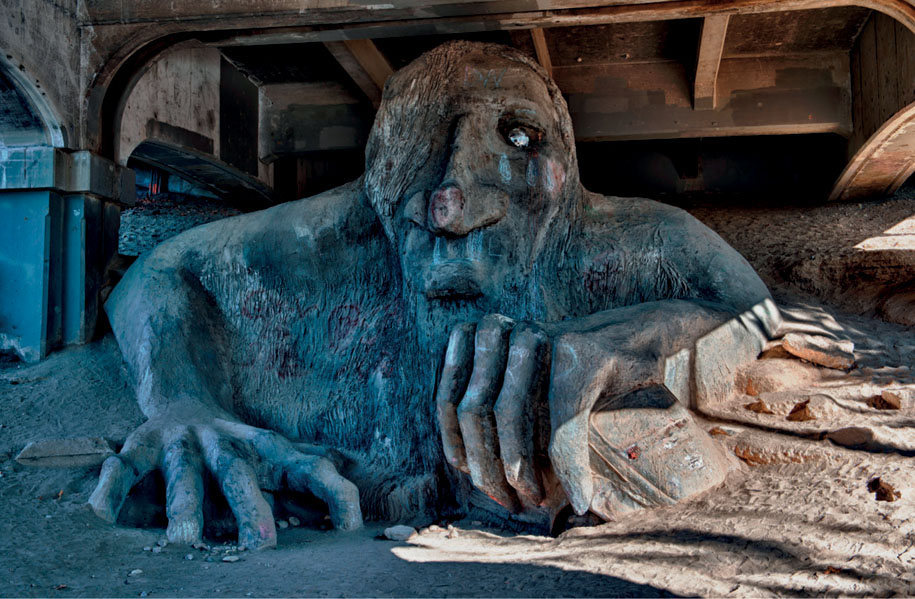
Seattle’s Fremont Troll
Photo: Alamy: RGB Ventures/SuperStock
Hit the road north for the three-hour drive to Cloudburst Brewing (2116 Western Avenue) near Seattle’s iconic Pike Place Market. This pint-sized brewery specializes in one-off batches of Northwest IPAs, saisons, and culinary-inspired beers like oyster stouts, a brown ale with cinnamon and raisins, and a Ricola cough drop–based ale with fourteen herbs and spices.
Then head northwest along the Puget Sound to Holy Mountain Brewing (1421 Elliott Ave W), a heavy metal–themed temple to beer. Many of the brewery’s wood-fermented farmhouse ales are aged in foeders, barrels, and puncheons, and are on offer at the brewery’s stark, minimalist tasting room. The ten drafts also include saisons, pilsners, hoppy pale ales, and imperial stouts. The brewery’s forte is Brett-fermented blended ales conditioned on wood and in the bottle. Pick up rare bottles and growlers to go.
Finally, drop in on Fremont Brewing (1050 N 34th Street) in its namesake Fremont district of Seattle for a family-friendly urban beer hall vibe with plenty of tasty brews. The game here is hoppy pale ales like Universal Pale Ale and Interurban IPA, along with seasonals and barrel-aged one-offs. There are often special cask ales as well as free pretzels and house-made soda for the kids.
TRIP 2
GERMANY
Germany has any number of beer pilgrimages one could embark on across its expanse. But the four stops chosen here feature particularly unique brews that historically were rarely made outside of their hometowns. Let’s go!

Original illustration by Skatin Chinchilla
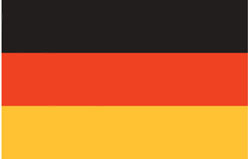
COLOGNE—BAMBERG—LEIPZIG—BERLIN
TOTAL MILES: 520
TOTAL DRIVING TIME: 9 HOURS
NUMBER OF DAYS: 4
DAY 1 COLOGNE
In Germany, Kölsch can only be brewed in Cologne (Köln). And while you’re in Cologne, pretty much the only beer available on draft at restaurants, bars, and clubs is Kölsch. The pale greenish-hued brew is often thought of as a lager-ale hybrid, but strictly speaking, it is a pale ale holdover from the pre-lager days of German brewing. Light in color and alcohol, it has a smooth, grassy flavor considerably less bitter than a pilsner, with a fruity, dry finish.
The quintessential place to try it is Brauerei Päffgen (Friesenstraße 64–66), just outside the old city center. This boisterous, wood-adorned tavern serves traditional unfiltered Kölsch dispensed from wooden barrels. Päffgen’s beer has a remarkably fresh hop character. Order from the blue-clad, tray-toting waiters who sling Kölsch in its traditional tall, skinny, straight-walled 200 ml glasses. (Note: The brewery also runs the historic Gaststätte Lommerzheim, a traditional Kölsch pub that it purchased and reopened in 2008.)
For a taste of new German craft brewing, head to Braustelle (Christianstraße 2), Cologne’s first craft brewpub. A fixture of the Ehrenfeld neighborhood, it attracts both locals and craft-beer tourists. The premier brew is Helios, Braustelle’s take on its hometown beer. But also check out the brewery’s more experimental ales like American-style pale ales, fruited sours, altbier (a style typical of Düsseldorf), and smoked barrel-aged stouts.
Finally, drop in on Gaffel Am Dom (Bahnhofsvorplatz 1), located adjacent to Cologne’s massive Gothic cathedral. Gaffel is perhaps the hoppiest Kölsch in all of Cologne, with a sprightly bitterness. Check out the beautiful copper brewing equipment on display along the walls and the intricate stained-glass ceiling.
DAY 2 BAMBERG
Next, head to Franconia, the northern part of Bavaria, a region with easily one of the most interesting brewing cultures in all of Germany, if not the world. Franconia hosts more breweries per capita than any other part of Germany, and boasts robust pilsners and historic smoke-laced rauchbiers.
The finest rauchbiers are found in the middle of the historic city center where Schlenkerla is located (Dominikanerstraße 6). The brewery’s taproom offers a variety of smoked malt beers, from the flagship Aecht Schlenkerla Rauchbier (with a Märzen-like base) to smoked wheat beers and seasonals. Depending on what time of year you’re visiting, you may find specialties like fastenbier (a smoked bock-style beer brewed for Lent), kräusen (a blend of traditional and young smoked lager), or Christmas ale (a doppelbock brewed with oak-smoked rather than beechwood-smoked malt). All the beers are intensely flavored with smoke, lending them a medley of barbecued meat, Islay Scotch, and caramel malt flavors.
With the taste of smoke lingering on your tongue, head across the Regnitz River to Brauerei Spezial (Obere Königstraße 10) for even more rauchbier suds. Spezial is Bamberg’s second rauchbier producer, but crafts smoked beers with a deft, gentle touch that doesn’t overwhelm your palate the way Schlenkerla might. Spezial’s range includes traditional lagers, Märzen, and wheat beer, as well as “Ungespündet” beer, an unfiltered, full-bodied lager that literally translates as “unbunged.” The brewery houses an inn and restaurant—a one-stop shop for traveling beer nerds.
Your final stop should be at Mahrs Bräu (Wunderburg 10), one of the finest breweries in Franconia. This family-run establishment, with roots in the region dating back to 1895, boasts an old-world brewpub with traditional fare and a beer garden. Mahrs eschews the region’s smoked beers in favor of traditional lagers and weissbiers. Also check out Mahrs Pilsner (a robust take on the style), Hell (an extremely light Helles lager), and Bock (a strong, velvety beer).
DAY 3 LEIPZIG
It’s a three-hour drive north of Bamberg to Leipzig, the land of gose. If you wanted to visit the actual birthplace of the style, however, you would need to continue another two hours northwest to the historic town of Goslar. That’s where gose was invented, on the banks of the tiny Gose River. By the early nineteenth century, the style was extremely popular in Leipzig—the exact reason it became synonymous with Leipzig is unclear—but had all but disappeared from Germany by World War II. Only since the 1980s has gose production appeared again, first in Leipzig and then back in Goslar.
Your first stop will be Ohne Bedenken (Menckestraße 5), a gosenschenke, or specialty gose bar, which closed for decades, but reopened in 1986 during gose’s triumphant return to the city. This sprawling beer garden serves several varieties of gose, including Ritterguts, a brand made just outside Leipzig. The house gose is a slightly tart, highly refreshing thirst quencher of an ale made with wheat, salt, and coriander spice. Bartenders here will add schnapps and fruit syrups to dilute the tart bite, but opt for the beer straight, untainted by outside flavors. It’s delicious and refreshing.
Another gose served at Ohne Bedenken is from a brewery a few miles south called Bayerischer Bahnhof (Bayrischer Pl. 1), a stop that should be next on your list to visit. The Bayerischer brewpub opened in a historic rail station in 2000 and now brews gose and several other styles right on premise. The brewery’s Leipziger Gose is pale yellow in color with less sourness than Ritterguts and a more gentle mouthfeel and finish.
Finally, finish your day in Leipzig at Goldhopfen craft beer bar (Kolonnadenstraße 11), which has four taps of local beer and a handful of rare goses not commonly found elsewhere in the city.
DAY 4 BERLIN

Relax with a beer at Alexanderplatz, Berlin
Photo: iStock: Nikada
Start your day at the admittedly touristy Alt-Berliner Weissbierstube (Rathausstraße 21), a cozy café specializing in the city’s trademark, but nearly forgotten beer, Berliner weisse. Similar to gose, it is a light, refreshingly tart wheat ale soured with Lactobacillus. At Alt-Berliner, servers still dispense Berliner Weisse mit Schuss (with syrup) into customary wide-mouthed goblets with shots of sweet raspberry or woodruff syrup. Order it sans schuss for a true Berliner weisse experience.
Most of the Berliner weisse served at Alt-Berliner comes from the industrial Kindl brand. For a taste of old-school Berliner weisse made in small batches from authentic recipes, head to the Arminiusmarkthalle (Arminiusstraße 2–4). This sprawling food hall features lunch counters and a beer bar affiliated with Brewbaker, the makers of a lemony tart Berliner weisse first brewed in 2005.
Unlike Kindl, Brewbaker’s Berliner is fermented with Brettanomyces, a traditional Berliner weisse method used to impart the beer with a complex, funky character.
Finally, wind north to Emil’s Biergarten (Berliner Str. 80–82), where you’ll find a plethora of beer options, including ones from Andreas Bogk and his Bogk-Bier Berliner Weisse. Bogk has been a well-known home brewer and roving professional brewer for years, but only recently laid down roots at the historic Willner Brauerei Berlin at the same address as Emil’s in Pankow. Bogk’s Berliner Weisse is made with a special strain of Brettanomyces that gave the original Berliner weisse its characteristic aroma.
MATCHING PAIRS
Based on what we hope is your detailed and thorough knowledge of this chapter—with strictly minimal use of finger-and-thumb bookmarks—in which of the following places are you most likely to find which of the following beer brands or types? Grab a pen and join them up.
| WALLONIA | WEISSE |
| BEND | ARABIER |
| SEATTLE | FLEMISH KISS |
| LONDON | GUEUZE |
| BAMBERG | KÖLSCH |
| COLOGNE | RITTERGUTS |
| LEIPZIG | DEUCEBOX |
| PORTLAND | RICOLA COUGH-DROP ALE |
| BERLIN | OLD FOGHORN |
| FLANDERS | ORVAL |
| BRUSSELS | HELL |
| SAN FRANCISCO | INVERSION IPA |
TRIP 3
BELGIUM
Belgium is divided into three regions: Wallonia in the south, Flanders in the north, and the capital, Brussels, in the center. Each has its distinct specialties when it comes to beer.
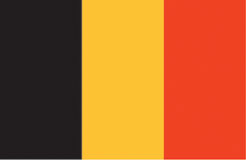
WALLONIA—BRUSSELS—FLANDERS AND BRUGES
TOTAL MILES: 275
TOTAL DRIVING TIME: 6 HOURS
NUMBER OF DAYS: 4
DAY 1 WALLONIA
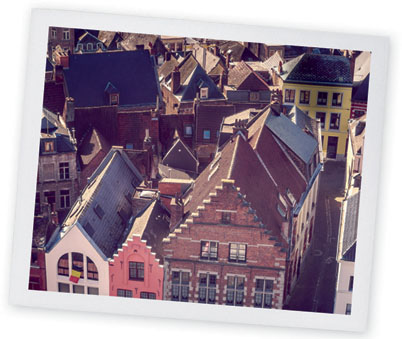
Cityscape in Wallonia
Photo: Getty: Samere Fahim Photography
It would be impossible to cover all of what Wallonia has to offer beer-wise in just one day, but the three spots offered here are a great start.
Begin in the far southeast of Belgium, at Abbaye d’Orval (Orval 1, Florenville). Although the monastery grounds date back to 1132, the present-day brewery was built in 1931. Orval makes just two beers: regular Orval, an amber-hued saison-like beer with Brettanomyces, and Petite Orval, a smaller version of that beer. Note that visitors cannot tour the brewery itself, but can visit the brewery museum.
Your next stop is 55 miles north to the Abbaye Trappiste de Rochefort in the town of Rochefort. Sadly, unlike Orval, the abbey does not allow visitors, but there are many bars and cafés within town in which to drink the local specialty. Drop in at La Gourmandise (Rue de Behogne 24) for local cheeses, cured meats, and Trappist beer. As well as the Rochefort trilogy—6, 8, and 10 (beers of increasing strength)—try a Chimay, another Trappist brewery further afield in the region.
The small village of Soy is a thirty-minute drive from Rochefort. You’ll need to call at least a few days ahead of visiting Fantôme Brasserie (Rue Préal 8, Soy). Dany Prignon, the sole proprietor, is a whimsical brewer who uses an ever-evolving variety of spices, herbs, and flowers in his special saisons. Fantôme saisons vary from fruity and light to robust, dark, and funky. One rumor is that Prignon doesn’t even like his own beers; he prefers stronger Trappist ales and soft drinks instead!
DAY 2 BRUSSELS
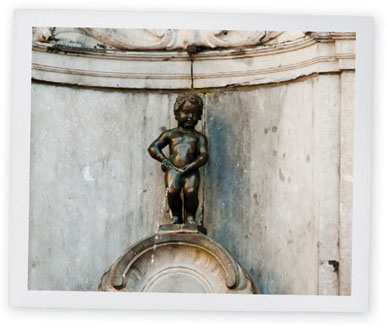
The Mannekin-Pis statue, Brussels
Photo: 4Corners: Adwo
Brussels is the home of lambic, perhaps the most unique and revered beer in the world. Your first stop should be Brasserie Cantillon and the neighboring Brussels Gueuze Museum (Rue Gheude 56). Brasserie Cantillon was founded around 1900 and is currently run by the great-grandson of founder Paul Cantillon, Jean Van Roy, who brews every ounce of beer the brewery producers. Onsite is a tasting room where lambic enthusiasts can taste rare vintages.
A short drive northwest is Brasserie de la Senne (Chaussée de Gand 565, Sint-Jans-Molenbeek). A small, artisanal brewery, de la Senne focuses on more modern beer styles like hoppy ales, while remaining dedicated to the traditional bold beers of Belgium (Note: The tasting room is closed on weekends.)
Finally, head back into central Brussels to Moeder Lambic Original (Rue de Savoie 68), a famed lambic and gueuze spot that is widely considered one of the best beer bars in the world. The menu is heavy on rare and vintage gueuze and kriek, but also features an assortment of Trappist ales and saisons. A second location of Moeder is now open near the famous Manneken-Pis statue.
NOTE: MANY BELGIAN BREWERIES ARE SMALL, FAMILY-RUN OPERATIONS THAT HOLD UNRELIABLE AND ERRATIC OPENING HOURS FOR THE PUBLIC. IT’S ALWAYS BEST TO CALL AHEAD TO SCHEDULE A VISIT DESPITE WHAT IS LISTED ON BREWERY WEBSITES OR IN TRAVEL LITERATURE.
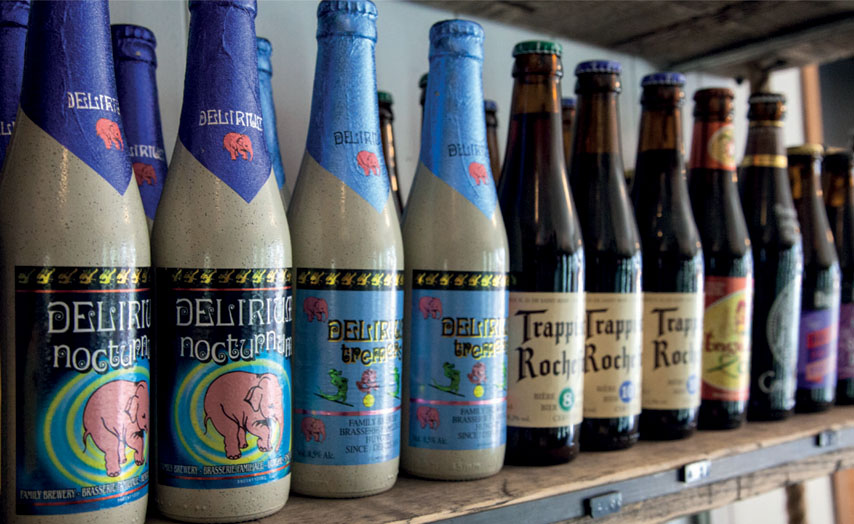
Delirium Nocturnum, Delirium Tremens, several Trappist Rochefort varieties
Photo: Louie Londt
DAYS 3 AND 4 FLANDERS AND BRUGES
If you happen to depart Brussels for Flanders on a Sunday morning and are thirsty for even more lambic, be sure to stop by the pub In de Verzekering tegen de Grote Dorst (Frans Baetensstraat 45, Lennik). This traditional Pajotten café (whose name translates as “In the Insurance against Great Thirst”) is a holdover from a bygone era when lambic ruled this part of Belgium. It features one of the largest and rarest selections of lambic, gueuze, and kriek in the world. The café is open only on Sundays, on official Church holidays, and whenever a funeral is being held at the adjacent St. Ursula Church. (Again, always call ahead before detouring out of your way, even if it is a Sunday.)
Flanders is home to a variety of beer styles, but the most iconic is Flanders red. The style is synonymous with Rodenbach, whose original brewery is located in the town of Roeselare (Spanjestraat 133). Dating back to 1821, the gorgeously preserved brewery is perfect for visiting (reserve ahead online or over the phone). Try the medium-tart red ales like Rodenbach Classic and Grand Cru (both blends of aged and new beer) or opt for the rare Alexander.
Your next stop is De Dolle Brouwers, a thirty-minute trip northwest in the town of Diksmuide (Roeselarestraat 12b). This small, artisanal brewery was founded in 1980 in a historic building with a brewing history dating back to the 1800s. De Dolle (“The Mad Brewers”) makes some of the most aggressively flavored but balanced beer in West Flanders. Of note are the Arabier, a 9 percent ABV hoppy beer made with whole leaf hops from nearby Poperinge, and Oerbier Special Reserva, the brewery’s take on the local oud bruin–style ale. Call ahead to schedule a visit and, if you visit around Christmastime, do not leave without a bottle of Stille Nacht Christmas ale.
NOTE: IF YOU WANT TO VISIT ANOTHER MONASTERY, JUST HALF AN HOUR DRIVE SOUTH OF DE DOLLE IS WESTVLETEREN (DONKERSTRAAT 12, VLETEREN), PERHAPS THE MOST EXCLUSIVE OF ALL THE TRAPPIST BREWERS. BEER SALES ARE BY APPOINTMENT ONLY, YOU MUST RESERVE AHEAD ONLINE.
Otherwise, head north to Bruges, the original capital of Flanders, where gruits were long the beverage of choice. In fact, many Flanders ales still contain a blend of herbs and spices, a modern-day reflection of the region’s gruit tradition. Bruges has many options for beer lovers, including ’t Brugs Beertje (Kemelstraat 5), a cozy but bustling bar near the city center with a menu of more than 300 beers organized by region. Nearby is Struise Brouwers Beer Shop (Burg 15), a tiny shop and bar specializing in beers from its parent brewery De Struise (located in Oostvleteren, near Westvleteren), as well as rare bottles from American and European brewers. Three draft beers are permanently available, alongside an ever-rotating selection.
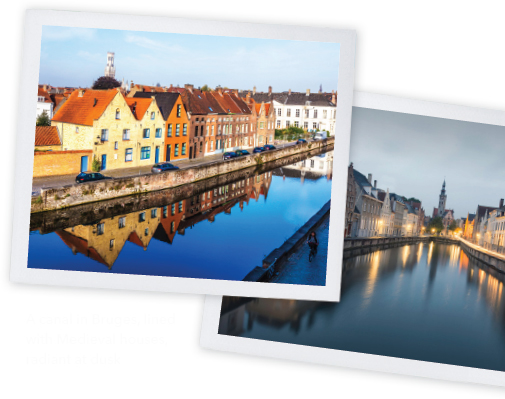
A canal in Bruges, lined with Medieval houses, radiant at dusk
Photos: Alamy: Anna Stowe Travel; Stocksy: Inigo Cia Da Riva
Several bars in town specialize in Trappist beers. Two of the best are Café Rose Red, located on the ground floor of the Hotel Cordoeanier (Cordoeanierstreet 18), and Le Trappiste (Kuipersstraat 33). A handful of other brewers in Bruges welcome visitors, including De Halve Maan (Walplein 26) and Bourgogne des Flandres (Kartuizerinnenstraat 6).
SATURDAYS AT LONDON’S BERMONDSEY BEER MILE
The current hotspot of London’s modern brewing scene is located under a series of railway arches in the southeast neighborhood of Bermondsey. Five breweries are located along the trail and each Saturday they open their doors to the public, allowing beer-seeking adventurers to embark on a brewery crawl along the Bermondsey Beer Mile.
The neighborhood’s DIY beer movement was sparked by the now-world-renowned The Kernel brewery, founded here in 2009. Others like Partizan, Brew by Numbers, Fourpure, and Anspach & Hobday have followed suit, imbuing the area with beery goodness.
Start south and work your way northwest. Your first stop will be Fourpure Brewing Co. (22 Bermondsey Trading Estate, Rotherhithe New Road, SE16 3LL), founded in 2013 by brothers Thomas and Daniel Lower. The name references the four “pure” ingredients in brewing: water, malt, hops, and yeast. The brothers utilize a twenty-barrel brewhouse to crank out fresh hoppy beers like Session IPA and Deucebox, an imperial IPA, as well as traditional British styles like oatmeal stout and barleywine.
Next up is Partizan Brewing (8 Almond Street, SE16 3LR), opened in 2012 by chef Andy Smith and former Redemption brewer Andy Moffat. The brewery focuses on dark ales like foreign-export stouts, barrel-aged imperial stouts, and black IPAs, as well as American-style pale ales and IPAs. They even collaborated with Denmark’s Mikkeller on a barrel-aged Belgian-style quad ale.
A short walk away is The Kernel (Arch 11 Dockley Road Industrial Estate, SE16 3SF), which was founded by Evin O’Riordain. The Kernel is known for its dry-hopped American-style IPAs like Double Citra and Mosaic, and its ever-evolving selection of IPAs is rounded out with a variety of historically inspired stouts like Imperial Brown Stout London 1856 and Export Stout London 1890.
Next stop is Brew By Numbers (79 Enid Street, SE16 3RA). Co-founders Tom Hutchings and David Seymour were inspired by The Kernel’s O’Riordain, as well as craft beer scenes in Australia and New Zealand. Their beers are named via a numerical system, which first lists style (01, 02, 03, etc.) and then iteration of that style (01/01, for example, is a saison with Citra hops, while 05/03 is an IPA with Amarillo and Mosaic).
Your final stop is Anspach & Hobday (118 Druid Street, SE1 2HH), a Kickstarter-funded brewery opened in 2014 by Jack Hobday and Paul Anspach. The duo focuses on dark ales like porters and stouts. Perhaps their most famous beer is Smoked Brown, a cross between a traditional brown ale and a German smoked rauchbier.

Photo: Alamy: Kathy deWitt
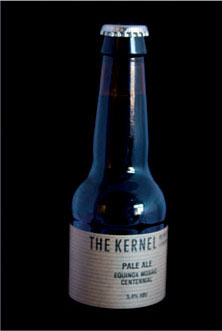
The Kernel brewery kickstarted south London’s bustling beer movement